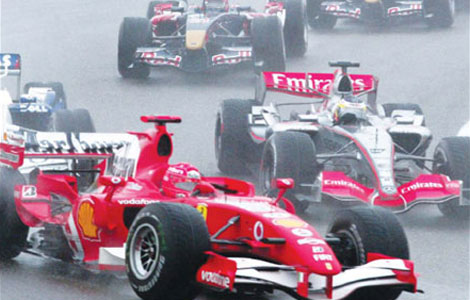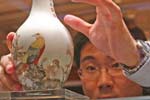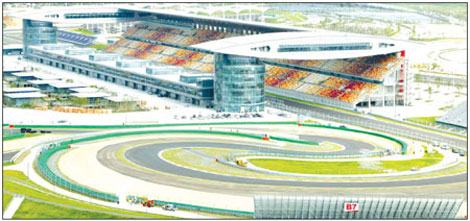Green light
Updated: 2011-04-08 11:07
By Matt Hodges (China Daily European Weekly)
|
|
|
An aerial view of the Shanghai International Circuit, which has hosted Chinese F1 Grand Prix since 2004. |
In contrast, tennis has boomed in China over the last decade, built on the back of female players like Zheng Jie and Li Na sweeping trophies and making Grand Slam finals. As far back as 2005, Shanghai, which also hosts the Rolex Masters in October, had an official "tennis population" of 500,000, referring to people who play recreationally at least once or twice a week.
But hosting the F1 isn't just about building a local fan base. It's also a $40-million (28 billion euros) advertisement for the city.
Juss signed a new seven-year deal with Formula One Management (FOM) this year to keep the race in China's financial hub till 2017. FOM reportedly lowered its costs to sweeten the deal and keep China on board, according to comments made by Shanghai Vice-Mayor Zhao Wen.
"The conditions of the agreement have improved, so we don't need to spend so much this time because the vision of the two parties is getting more focused on how to promote F1 in China," says Yang, who is unable to disclose financial details.
FOM falls under the penumbra of the Formula One Group, which is responsible for the commercial rights of F1. It is controlled by CVC Capital Partners, one of the world's top five private equity firms. JP Morgan and Bernie Ecclestone's family trust hold most of the remaining shares in the group.
"FOM is donating its resources to help promote the sport here. They are changing from being a trading partner to being a cooperative partner," says Yang.
Yet Juss has no say in sponsorship matters, according to Yang. FOM and its chief executive Ecclestone keep close tabs on sponsors via an intermediary agency purchased in 2006, Allsport Management.
Nonetheless, the mood on the Chinese side is upbeat. Juss just about breaks even each year by selling the domestic TV rights to the race and managing the circuit. Meanwhile, Shanghai successfully organized the World Expo last year, and can now boast of hosting two key sporting events each calendar year, including the $3.2 million Shanghai Rolex Masters, as it aims to pull in overseas tourists and investors.
"The Chinese Grand Prix has grown in stature since Shanghai first hosted the race in 2004," said Jiang Lan, secretary-general of the Formula 1 Chinese Grand Prix Organizing Committee, late last year. "These are very exciting times."
Playboy millionaire drivers, screaming Ferrari engines, nail-biting hairpin bends, leggy models and everything that adds to the glitz and glamour of F1 make it an attractive depositary for sponsors' riches, but it is the huge TV audience that seals the deal. An estimated 527 million people watched F1 in 2010, making it the world's most watched annual sport.
"We estimate that the Chinese Grand Prix made a loss of $34.4 million in 2010, which was plugged by funding from the local government. However, like the many sponsors who are involved in F1, China's real reason for taking part is not to make a profit - it's those 527 million TV viewers," says Caroline Reid of F1 consultants Formula Money.
Some 70 million of those come from China, says Yang. "The number is increasing each year, but little by little," he adds.
E-paper

Green light
F1 sponsors expect lucrative returns from Shanghai pit stop
Buying into the romance
Born to fly
Light of hope
Specials

Share your China stories!
Foreign readers are invited to share your China stories.

No more Mr. Bad Guy
Italian actor plans to smash ‘foreign devil’ myth and become the first white kungfu star made in China.

Art auctions
China accounted for 33% of global fine art sales.

